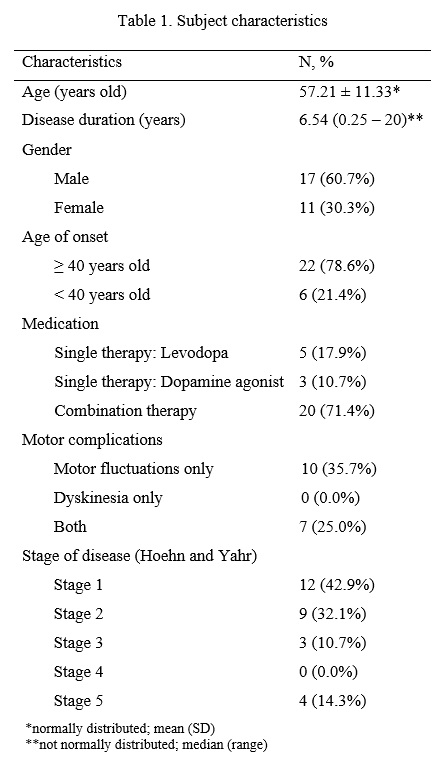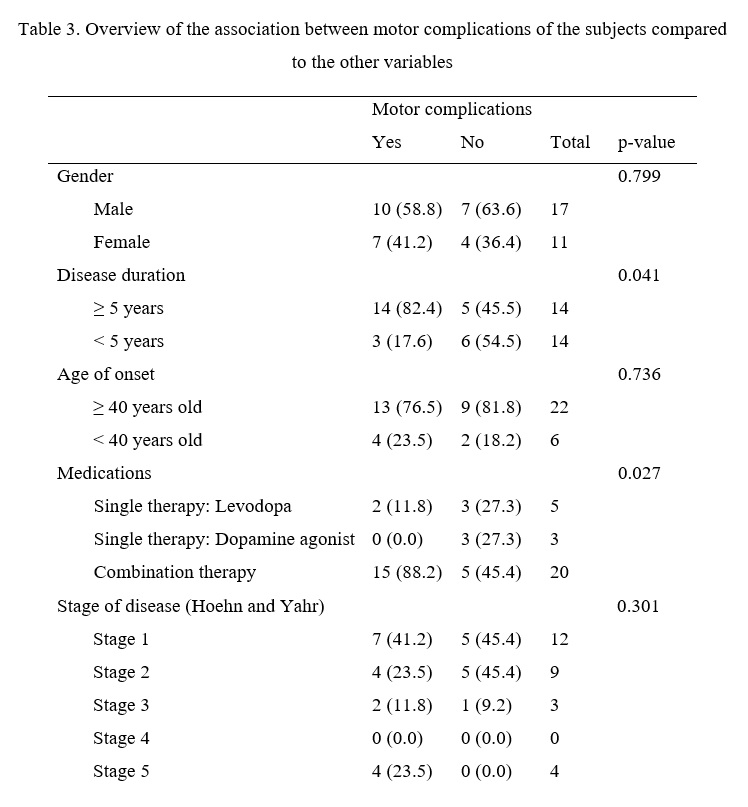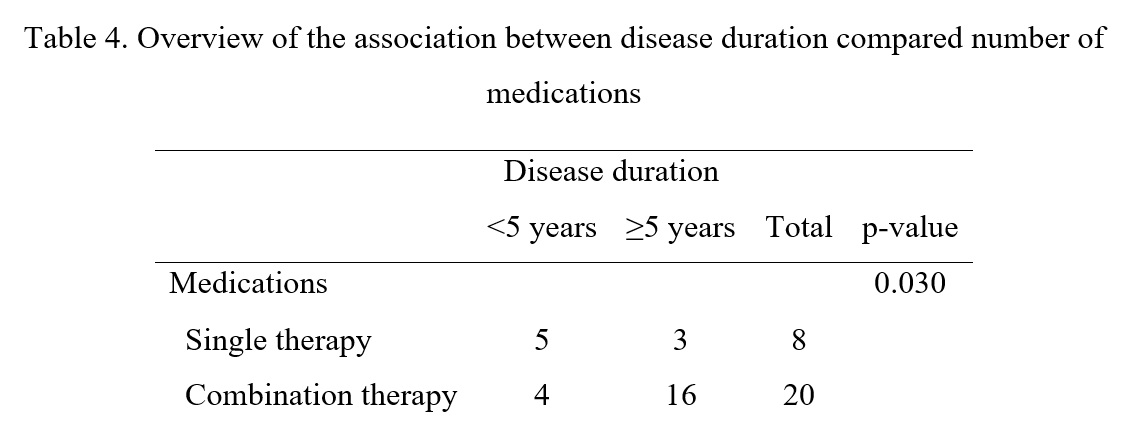Objective: To analyse factors associated with motor complications in Parkinson’s disease at a national tertiary referral hospital in Indonesia.
Background: As Parkinson’s disease progresses, levodopa becomes less effective, and larger doses are required to achieve the same effect, increasing the risk of unwanted side effects and motor complications, such as dyskinesia and motor fluctuations, which is a crucial issue in the long-term management of Parkinson’s disease patients.
Method: A retrospective study was conducted using data from the medical records of patients with Parkinson’s disease who went to the neurology outpatient clinic in Cipto Mangunkusumo Hospital. Data collected included age, gender, Hoehn and Yahr stage, disease duration, number of antiparkinsonian drugs, and motor complications in the form of dyskinesia and motor fluctuations. In addition, gender, disease duration, age of disease onset, combination therapy, and Hoehn and Yahr stage were analysed to determine their association with motor complications.
Results: This study had 28 subjects, including 17 men (60.7%) and 11 women (30.3%). The mean age was 57.21 ± 11.33 years old and most subjects (42.9%) were in Hoehn and Yahr stage one. The motor fluctuations (60.7%) have a higher prevalence compared to dyskinesia (25.9%). Wearing off is the most common motor fluctuations (50.0.%) among the subjects. Subjects with disease duration as short as two years began to have motor fluctuations, while dyskinesia occurred earliest in subjects with disease duration ≥ 5 years. The duration of the disease has a significant relationship (p<0.05) with the number of medications so that the longer the duration of the disease, the more likely a combination of drugs is given to the subject, and therefore subjects with combination therapy, are associated with a longer duration of the disease, more likely to have motor complications (p<0.05).
Conclusion: Wearing off is the most common motor complications, with earlier onset than other complications, such as dyskinesia. Longer disease duration was related with higher number of motor complications.
Table 1. Subject characteristics
Table 2. Shapiro-Wilk normality test
Table 3. Comparative test of motor complications
Table 4. Comparative test of disease duration
References: 1. Sun B, et al. Analysis of motor complication and relative factors in a cohort of Chinese patients with Parkinson’s disease. Parkinson’s Disease. 2020 Jul 29;2020.
2. Kadastik‐Eerme L, et al. Factors associated with motor complications in Parkinson’s disease. Brain and behavior. 2017 Oct;7(10):e00837.
To cite this abstract in AMA style:
Y. Rapri, A. Jody, A. Tiksnadi, D. Tunjungsari. Clinical Profile of Motor Complications in Parkinson’s Disease Patients at A National Tertiary Hospital In Indonesia [abstract]. Mov Disord. 2024; 39 (suppl 1). https://www.mdsabstracts.org/abstract/clinical-profile-of-motor-complications-in-parkinsons-disease-patients-at-a-national-tertiary-hospital-in-indonesia/. Accessed March 31, 2025.« Back to 2024 International Congress
MDS Abstracts - https://www.mdsabstracts.org/abstract/clinical-profile-of-motor-complications-in-parkinsons-disease-patients-at-a-national-tertiary-hospital-in-indonesia/




